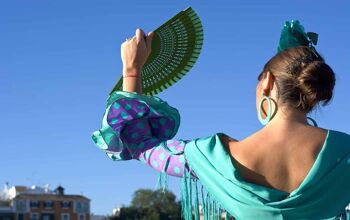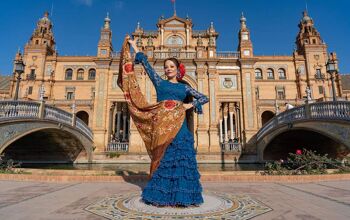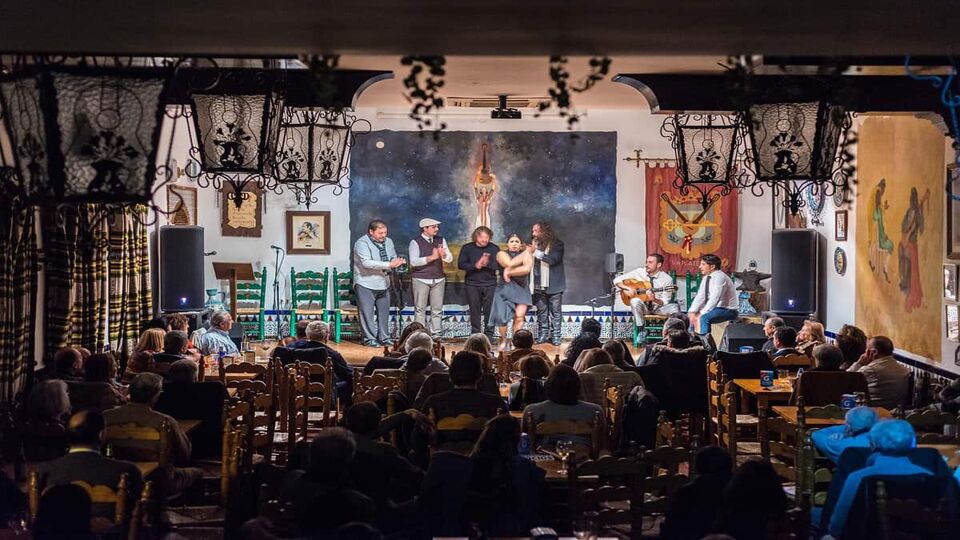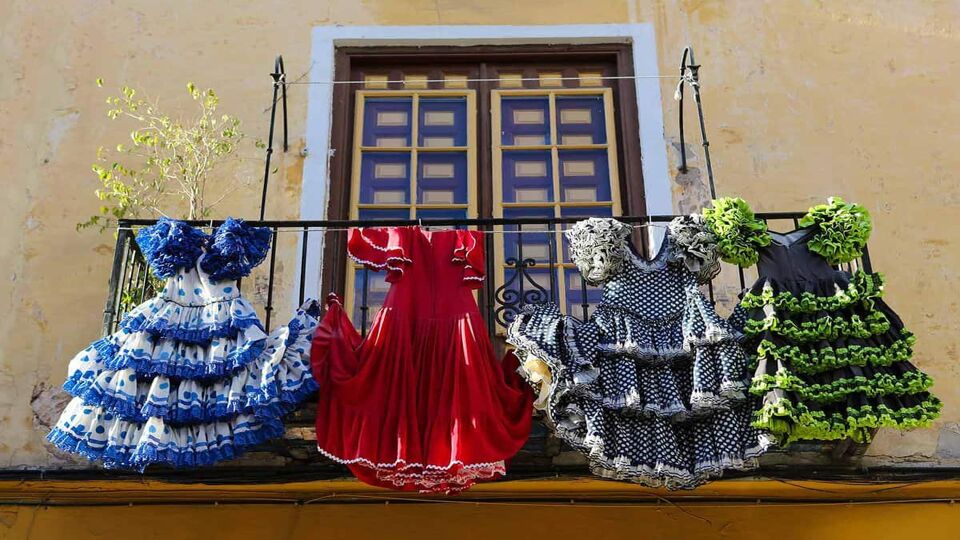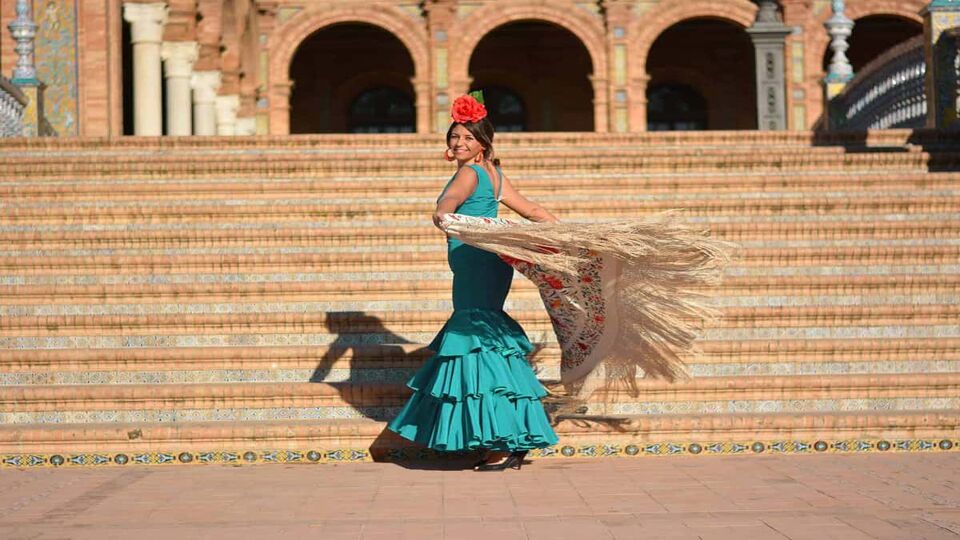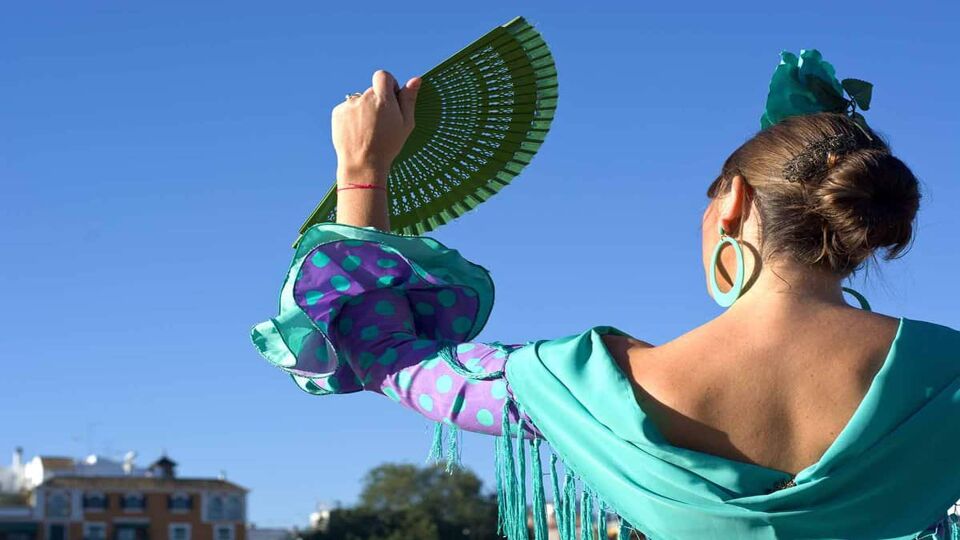Andalusia expresses its passionate soul in the guitars, singing and twirling, stamping steps of its native flamenco – declared Intangible Cultural Heritage of Humanity by UNESCO in 2010.
Most scholars believed the seeds of flamenco arrived in the 15th century with the Roma from India. Over the centuries they slowly migrated west with their castanets and tambourines, absorbing songs and dances in the Middle East and North Africa along the way. The Spanish at first considered it a foreign art, or ‘Flemish’ – hence flamenco.
By the 19th century flamenco as we know it emerged – popularized by Bizet’s Carmen – with shows performed in cafés cantantes (singers’ cafés), the forerunners to the modern tablaos. These are intimate venues with small wooden stages, perfect for the exhilarating machine gun-like zapateado (dancing).
You can hear flamenco’s eastern origins in the singer’s cante jondo (‘deep song’), evoking pain, sorrow and joy, while dancers express each emotion with their bodies, driven by the pulsing percussive strumming of the guitars.
A good show, and there are many here, can send chills down your spine with their duende, the ecstatic ‘demon’ spirit that brings listeners out of themselves.


